Jemima Gomes joined Blue Ventures in 2016 as the Diving Assistant during Blue Ventures Expedition programme in Timor-Leste. Jemima recently participated in a Seagrass Ecosystem Services regional workshop in Indonesia. Here, she shares her personal experience of the Blue Carbon workshop.
I recently had the incredible opportunity to attend a workshop in Bogor, West Java, Indonesia where my eyes were opened to the world of blue carbon. I met young, bold, and brilliant people, who like me, want to empower communities to protect our ocean with solutions that are grounded in evidence.
As a fisherwoman from Atauro Island, I joined Blue Ventures about seven years ago. My journey with seagrass started when my supervisor asked me if I was interested in learning about the Seagrass Watch method. Today, I am the seagrass and livelihood coordinator and my mission is to learn more about the rich ecosystem and help the coastal communities in Timor-Leste thrive from it.
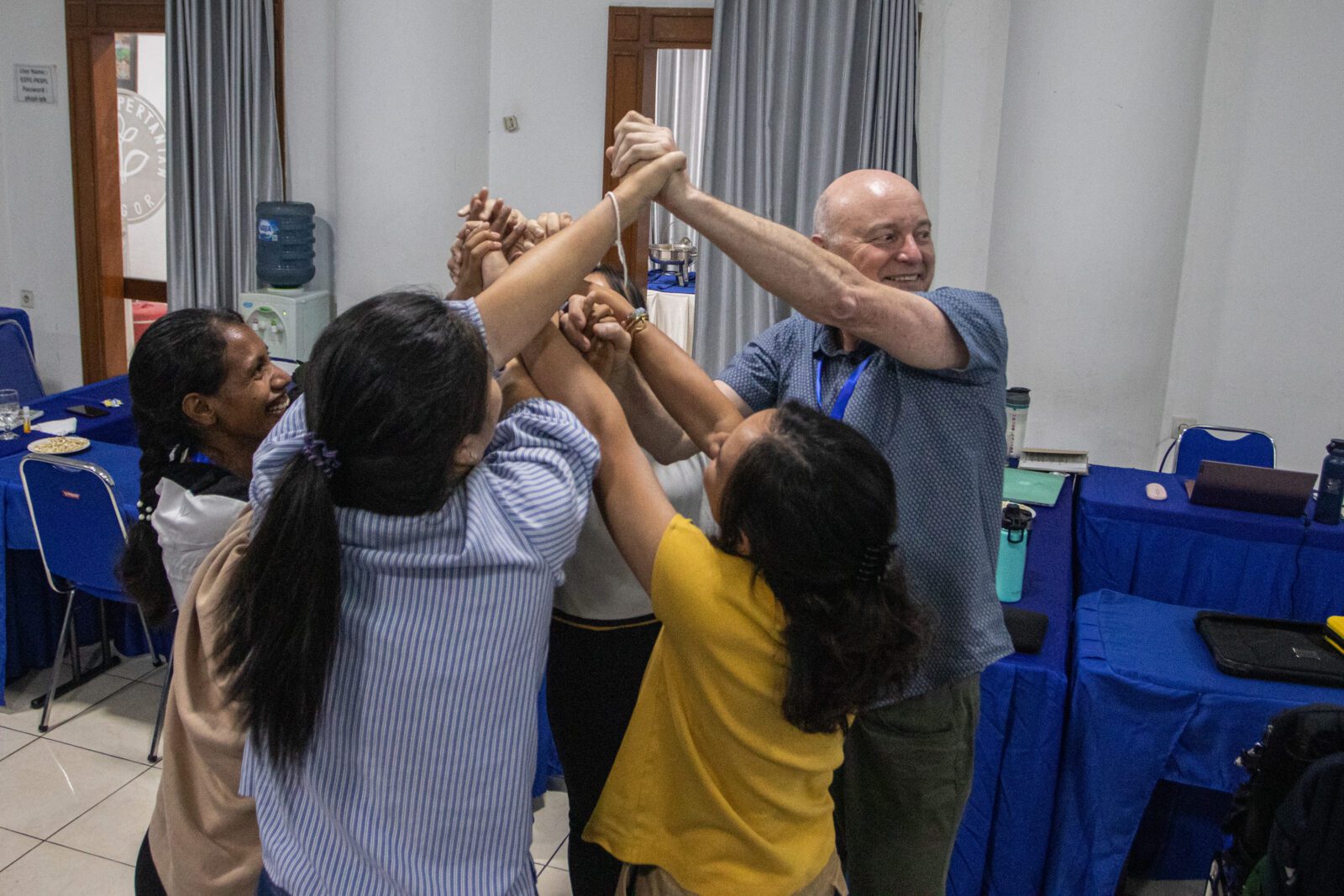
National partners, technical partners, and I during a fun icebreaker exercise. (Credit: YAPEKA)
As part of the Seagrass Ecosystem Services Project, the workshop was organised by our good friends from YAPEKA, an Indonesian-based organisation engaged in community empowerment and nature conservation. They brought together all national and regional partners, as well as technical experts in blue carbon, dugong monitoring, and participatory video to join the six-day event.
I have always been fascinated by the blue carbon world, especially seagrass. However, I found the workshop interesting because it offered me the opportunity to learn more from experts and direct practitioners about the key ecosystem, its importance in supporting umbrella species like the Dugong, and how it supports local livelihoods.
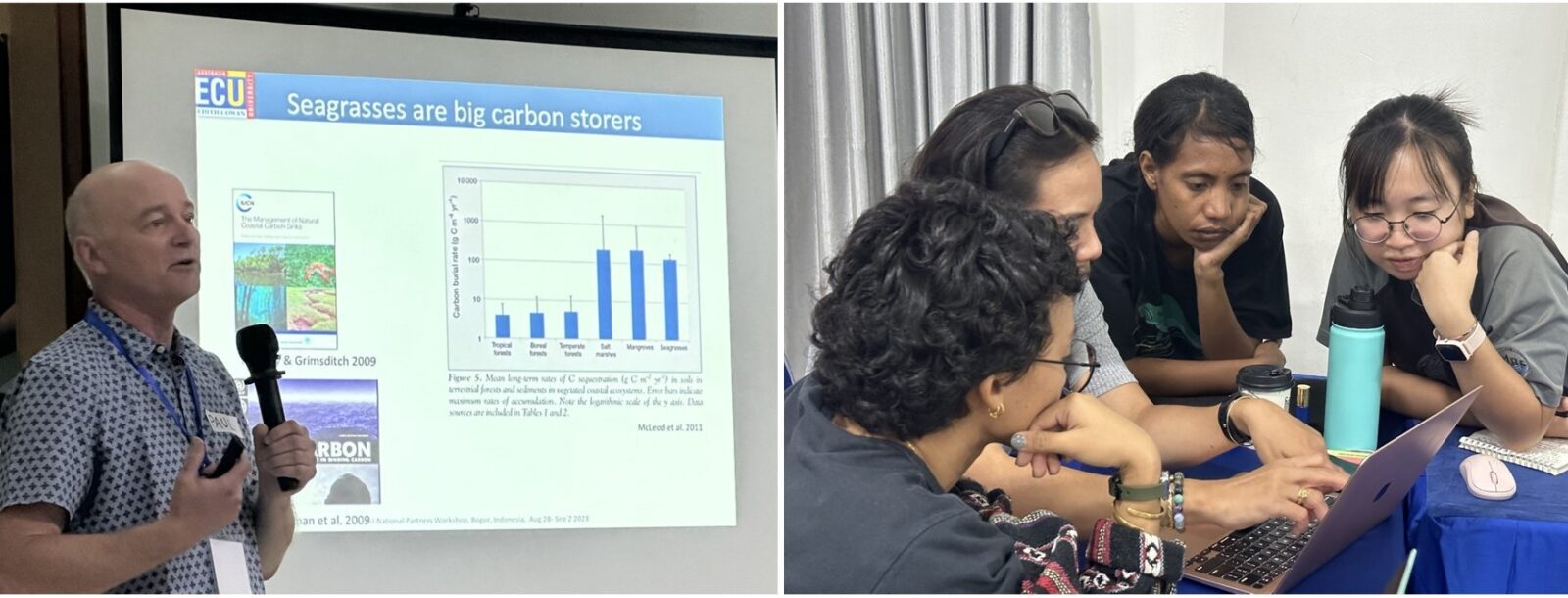
Paul Lavery, a blue carbon expert, delivered a presentation on seagrass carbon stocks (left); and I with other participants calculated the carbon stocks on an Excel sheet (right). (Credit: Blue Ventures | Janicia Silva de Jesus)
Climate change is a global issue but I believe that local nature-based solutions like blue carbon management managed at a local level can change the world. My focus is on how coastal communities can use various tools to watch seagrass, learned from this workshop, to improve the benefits that this ecosystem provides.
We know that seagrass can only survive close to the shore where there is shallow water with access to sunlight. We also know that this is where fishers catch most of their fish. If we can empower local fishers to care for and protect this area, we have the potential to set up a sustainable system where people can take and preserve these rich ecosystems. I believe the same should apply to blue carbon management.
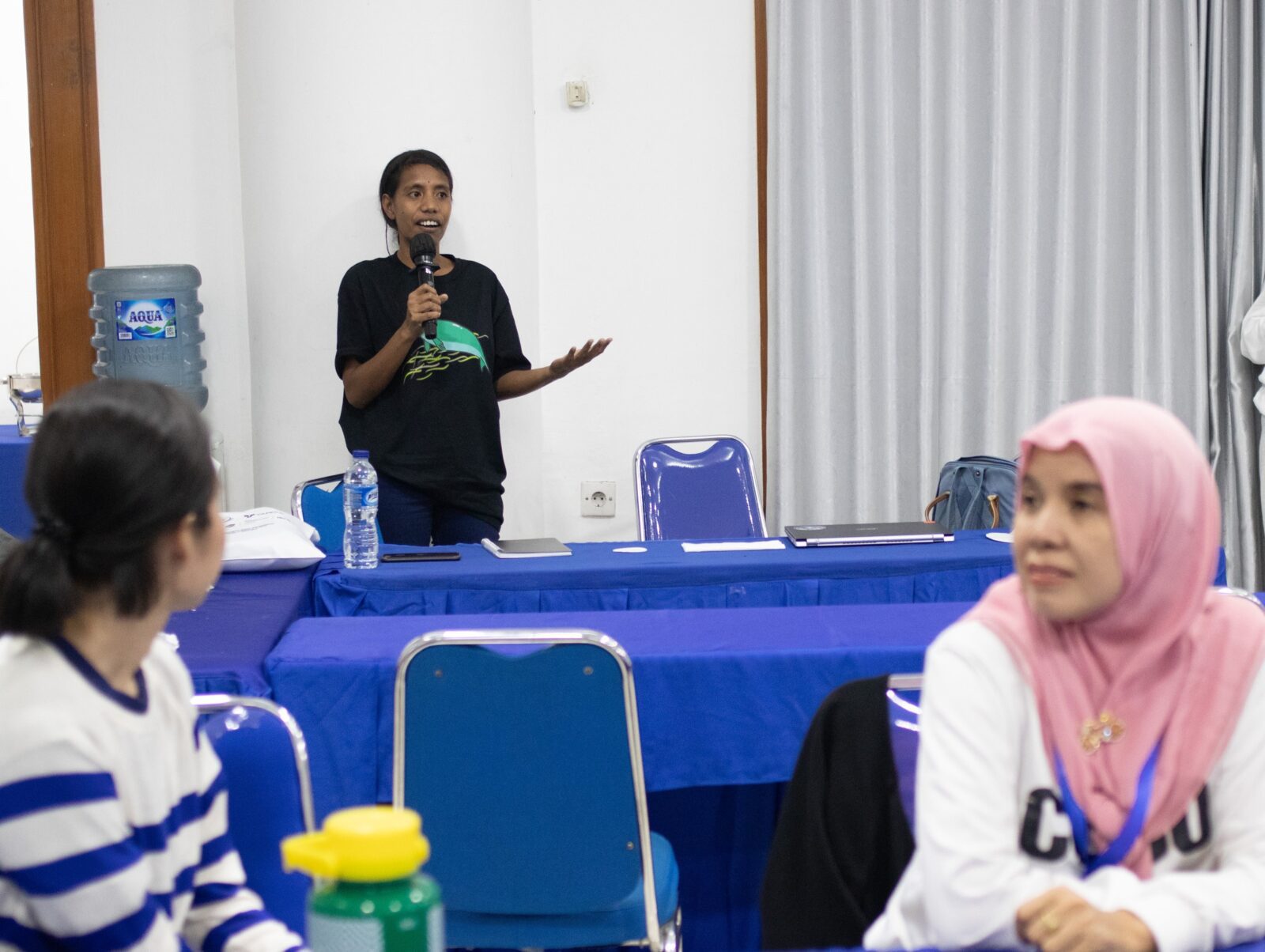
On the last day, each national organisation partner shared their feedback on the workshop. (Credit: YAPEKA)
During the blue carbon session with our technical partners at the workshop, I learned methods and the formulas to measure how much blue carbon stock there is in a hectare of seagrass meadow. From collecting samples through a process called “coring” to examining the organic matter content, out of which we can estimate the carbon sequestration potential. But what makes this more exciting is the fact that seagrass stores the most below-ground carbon, more than mangroves, more than any other plant on land.
In my experience, seagrass is often overlooked compared to its other more popular neighbouring coastal ecosystems, such as coral reefs and mangroves. This amazing discovery has ignited a deep motivation to disseminate this knowledge to the community. I anticipate that as more people become aware, seagrass will be increasingly valued as one of the valuable marine habitats, extending far beyond its role in fisheries.
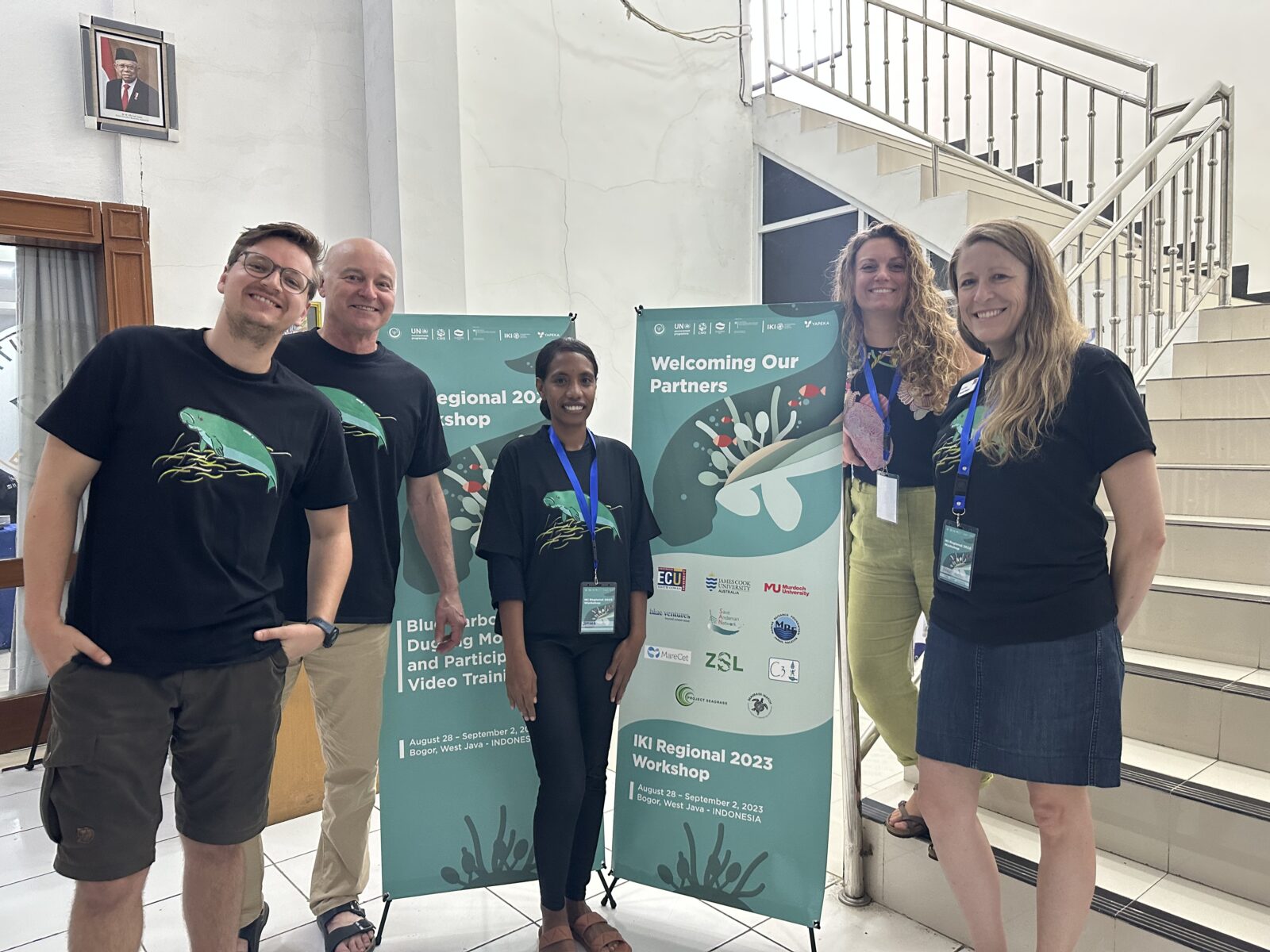
I am with all the technical partners: Matt Judge from participatory video, Paul Lavery and Anna Lafratta from blue carbon, and Amanda Hodgson from Dugong monitoring. (Credit: Blue Ventures | Janicia Silva de Jesus)
I felt inspired to experiment with the new tools and knowledge I gained. And I thought, if I could grasp these complex methods in six days, I am sure that the communities could also do the same. If we invest in empowering communities to lead using these new technologies and modern methods to protect and conserve nature, the benefits extend beyond them, as we have seen in the model that Blue Ventures believes in – putting communities first.
Communities in Madagascar have been doing blue carbon management successfully and I saw how nature and people benefitted from that. However, this is not to say that this is an easy thing to accomplish. One of the challenges is the quality of basic science education in rural communities as I observed during my role as the Community Liaison Officer. How do you explain blue carbon to someone whose highest level of education is primary school with a poor educational curriculum?
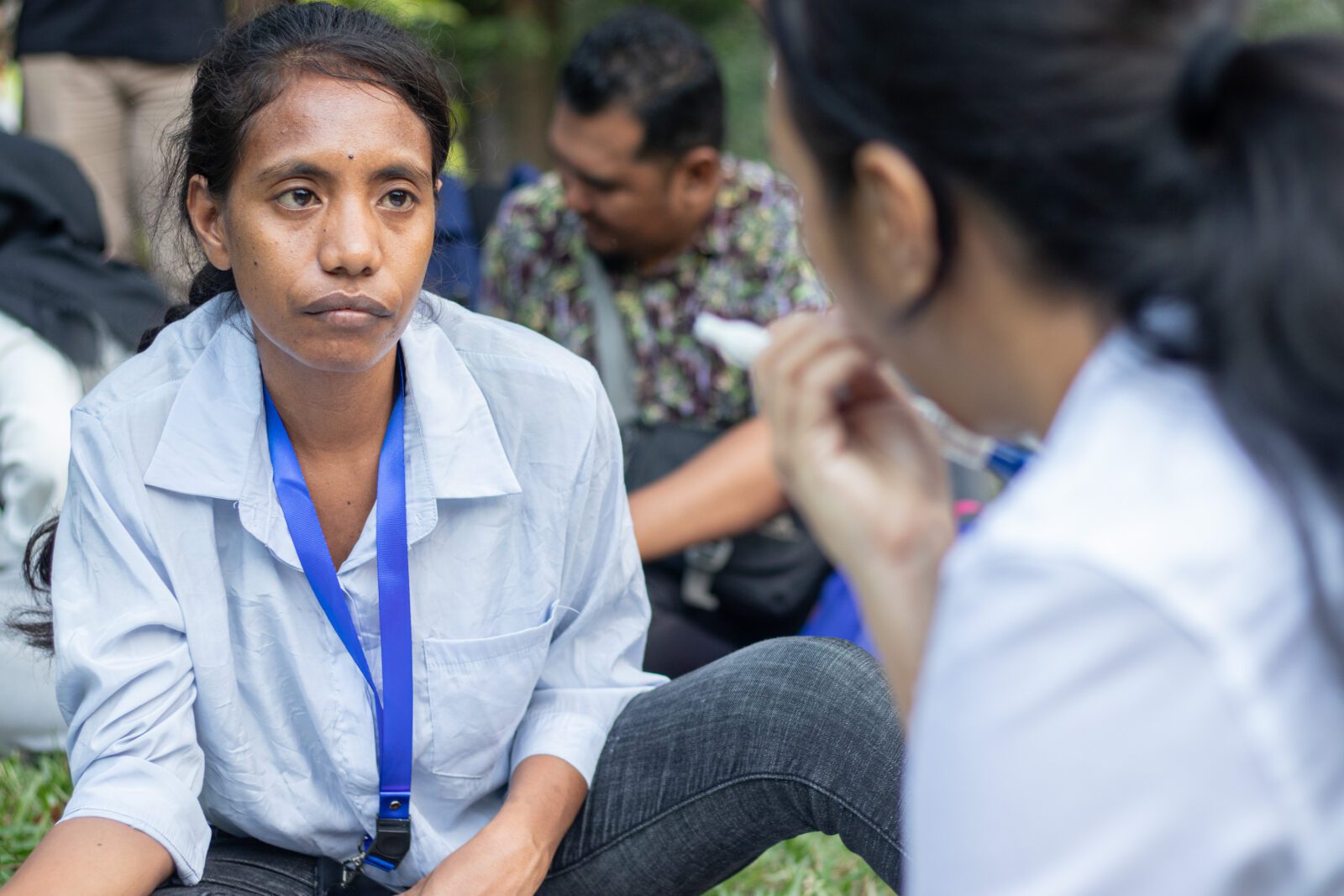
Sitting in the botanical garden, we were discussing BV Timor-Leste’s journey with seagrass. (Credit: YAPEKA)
While sitting in the beautiful botanical garden of Bogor with other participants, we discussed the challenges and lessons learned during the process of measuring blue carbon stock. This shows me that every day is a learning process and through a sharing session like this, we can transfer our newfound knowledge to the communities, just as the technical expert and other national partners have graciously done so towards me.
Fishers deserve to learn about blue carbon just as they learned to fish in order to reap the benefits of their natural resources. If blue carbon management is a tool to mitigate climate change, preserve our ecosystems, and improve livelihoods, small-scale fishers should be in the driving seat.
These activities are part of the Seagrass Ecosystem Services Project, managed by the Secretariat of the Memorandum of Understanding on the Conservation and Management of Dugongs and their Habitats throughout their Range of the Convention on the Conservation of Migratory Species of Wild Animals (CMS Dugong MoU).
This project is part of the International Climate Initiative (IKI) and supported by the Federal Ministry for the Environment, Nature Conservation and Nuclear Safety (BMU) based on a decision of the German Bundestag.


